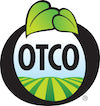Shipping Containers Take Urban Gardens to a Potent, Portable New Level

Shipping containers are finding new life upcycled as homes and offices, even emergency shelters, but how about urban gardens?
That’s the vision of D.C.-based entrepreneur, Daniel Kuenzi, who is turning unused shipping containers into urban gardens.
According to Smithsonian.com, there are about 700,000 unused shipping containers in the U.S. at any given time. For Kuenzi, that makes him see green—as in green leafy vegetables. And lots of them.
Kuenzi co-founded Local Roots Farms in 2013, which is growing organic leafy greens in shipping containers in Los Angeles. “Kuenzi and the fledging company's three other employees have stacked crops under energy-efficient LEDs,” reports Smithsonian. “They are running their proprietary hydroponic setup through its paces and gladly taste testing for quality.” And the farm expects to be serving up its lettuce to local area grocery stores in Southern California by early 2015.
According to Kuenzi, one of his main motivation for turning shipping containers into gardens has to do with the millions of Americans livin in urban food deserts, “areas of our cities where retailers find it unprofitable to build stores that sell fresh produce,” he told Smithsonian. “How can we expect to eat healthily when good food is either too expensive or nonexistent?”
Kuenzi says that shipping containers are “durable, easy to modify, stackable and can be shipped anywhere,” which makes the Local Roots’ business model easily expandable. Plus, the low cost of unused shipping containers makes it easy to get new farms up and running in a matter of weeks, compared with the cost and time for conventional greenhouses or other indoor growing operations. “We hope to one day use these containers for temporary food production in remote locations, including frontline military operations and rapid-response aid relief in foreign countries,” he said.
The shipping container farms use what Kuenzi calls “next-generation indoor agriculture techniques” that grow as much as five acres of conventional outdoor growing, “The process uses 80 percent less water with no harmful run-off and prevents exposure to pests and diseases,” he explains. “Indoor agriculture has existed for over 50 years, and we are only just starting to understand the potential these technologies have to feed the world.”
Leave a comment
Comments will be approved before showing up.


